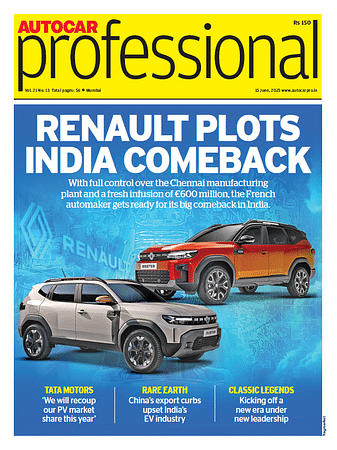Next 12-16 months will have long-lasting effect on India Auto Inc: Frost & Sullivan
Upcoming safety and BS VI norms, which will see a price increase across vehicle segments, will impact automobile purchases and consumers are likely to play the wait-and-watch game
Vehicle sales during 2018’s festive season were noticeably lesser than industry expectations and the sales numbers have continued on a downward spiral ever since. According to Kaushik Madhavan, vice-president, Mobility Practice, Frost & Sullivan, there are some factors that have contributed to the below-par performance of the automotive industry in India.
Although the government has announced the implementation of FAME II incentives for electric vehicles, the overall sentiment of uncertainty for the short term has taken precedence. Passenger vehicle market leader Maruti Suzuki India has revised its growth forecasts and reduced targets. This clearly shows that vehicle manufacturers are concerned about monthly sales during the next three months from April to June 2019. Additionally, the dealers are left with large volumes of unsold stock since the past six months, which in turn is putting pressure on their profitability and liquidity. Dealers are now pushing back on accepting fresh stock from the vehicle manufacturers, forcing them to balance volumes by rationalising production. Inventory management and liquidation are expected to be primary goals for dealers across passenger vehicles and two-wheelers in India over the next 2-3 months.
The introduction of BS VI emission norms in April 2020 is also expected to increase vehicle prices by 10-15 percent depending on the segment, further squeezing the margins. Consumers, especially in the price-sensitive segments, are likely to postpone their vehicle purchase further into 2020 till the price increase settles down. Commercial vehicle fleet operators are expected to resort to pre-buying just before the new emission norms kick-in, and as a result, a temporary spike in sales during the last quarter of the calendar year 2019 and first quarter of calendar year 2020 is likely.
The next 12-16 months in the Indian automotive market are going to be marked with various milestones with long-lasting effects. While the emission and safety regulations are expected to bring India closer to the global standards, the subsequent impact on vehicle pricing is likely to play spoilsport on sales volumes as consumers are likely to play the wait-and-watch game before bringing out their cheque books and signing on the dotted line.
Also read: FAME India Phase II outlay of Rs 10,000 crore gets government approval
FAME II good but not enough, says India Auto Inc at Two-Wheeler Industry Conclave
SIAM calls for long-term policy roadmap to enable smooth transition to future mobility
Analysis: Dr Pawan Goenka’s 7 pointers to drive India Auto Inc’s future growth story
RELATED ARTICLES
VinFast’s second plant in Vietnam goes on stream ahead of India factory
Vietnamese EV maker’s second plant in its home market, which has a 200,000 EVs-per-annum capacity, will focus on produci...
Continental exits TBR market in India, shifts focus to car and SUV radials
German tyre manufacturer aims to tap the double-digit market growth opportunity for big SUV and luxury car tyres which w...
New ZF SELECT e-drive platform gives EV makers a choice in 100 to 300 kW range
Modular e-drive platform optimally matches 800-volt overall system and components such as the electric motor and power e...





 By Autocar Professional Bureau
By Autocar Professional Bureau
 19 Mar 2019
19 Mar 2019
 9911 Views
9911 Views









